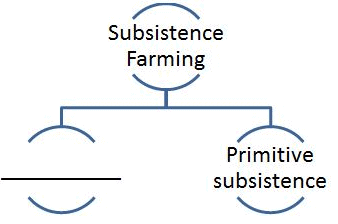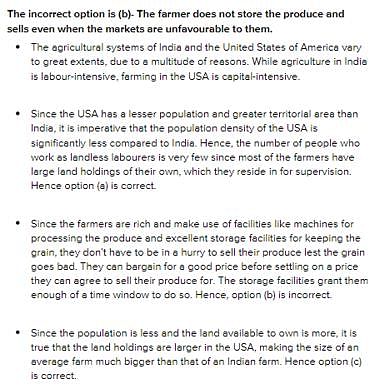Chapter Test: Agriculture - 2 - CTET & State TET MCQ
20 Questions MCQ Test - Chapter Test: Agriculture - 2
Name the type of farming practiced to meet the needs of the farmer's family i.e.
Fill up the missing blank after analyzing the given image :

| 1 Crore+ students have signed up on EduRev. Have you? Download the App |
A few statements with respect to the farm in USA are given below. Pick out the one that is not TRUE
Name the term given to the Breeding of Fish in specially constructed tanks and ponds
Which of the following are the important inputs for agriculture?
Name the animal that is not reared by the nomadic herders as these animals provided milk, meat, wool etc.
Name the type of farming followed from the given image
The main motive of this type of cultivation is profit .Large area of land and a huge amount of capital is used for cultivation with latest technological advancement . Name the type of farming from the given list.
The word agriculture is derived from the Latin words ager or agri and Culture meaning Cultivation . What does the word agri literally mean?
Analyse the following and identify which one among the following can be treated as Inputs to the agriculture system.
Crop plants may be attacked by pests which affect the crop production. Fungi are such type of pests which cause diseases like
Name the term given to Growing of Vegetables flowers and fruits for commercial use.
Agriculture or farming can be looked at as a system. Which one among the following is not an important input of agriculture
Agriculture or farming can be looked at as a system. Which one among the following is not an important output of agriculture
From the following list of inputs, mention the one that is not a natural input in the agriculture system.
This type of farming is practiced in the arid and semi-arid regions of Sahara, Central Asia, and Rajasthan etc. Herdsmen move from place to place with their animals for fodder and water along defined routes due to climatic constraints and terrain. Which type of farming is being referred to ?
Name the term given to the commercial rearing of silk worms to supplement the income of the farmer.
Which one of the following best describes intensive subsistence agriculture?


















